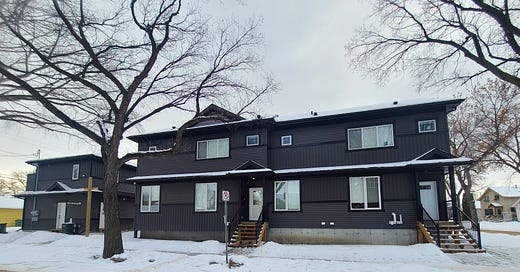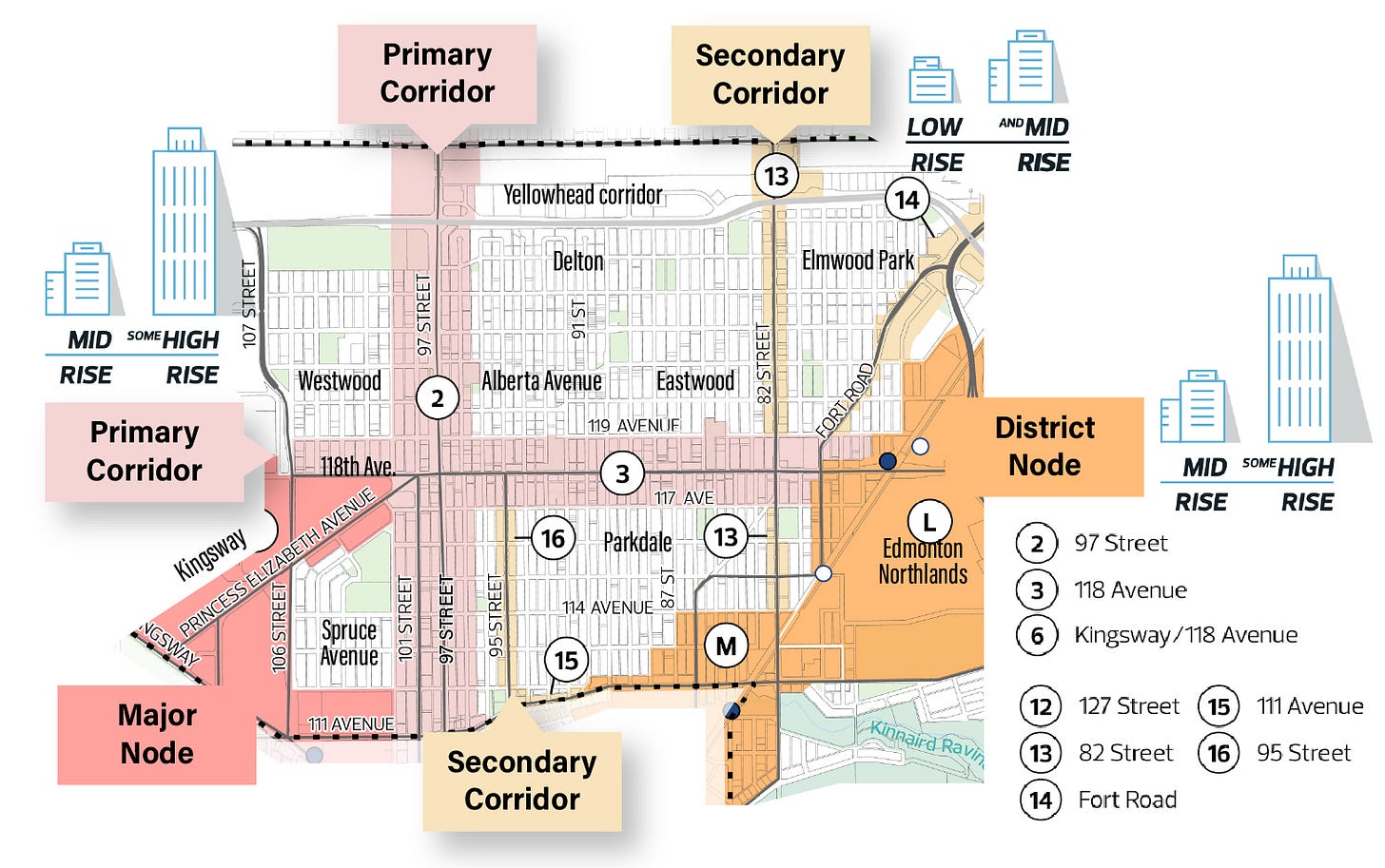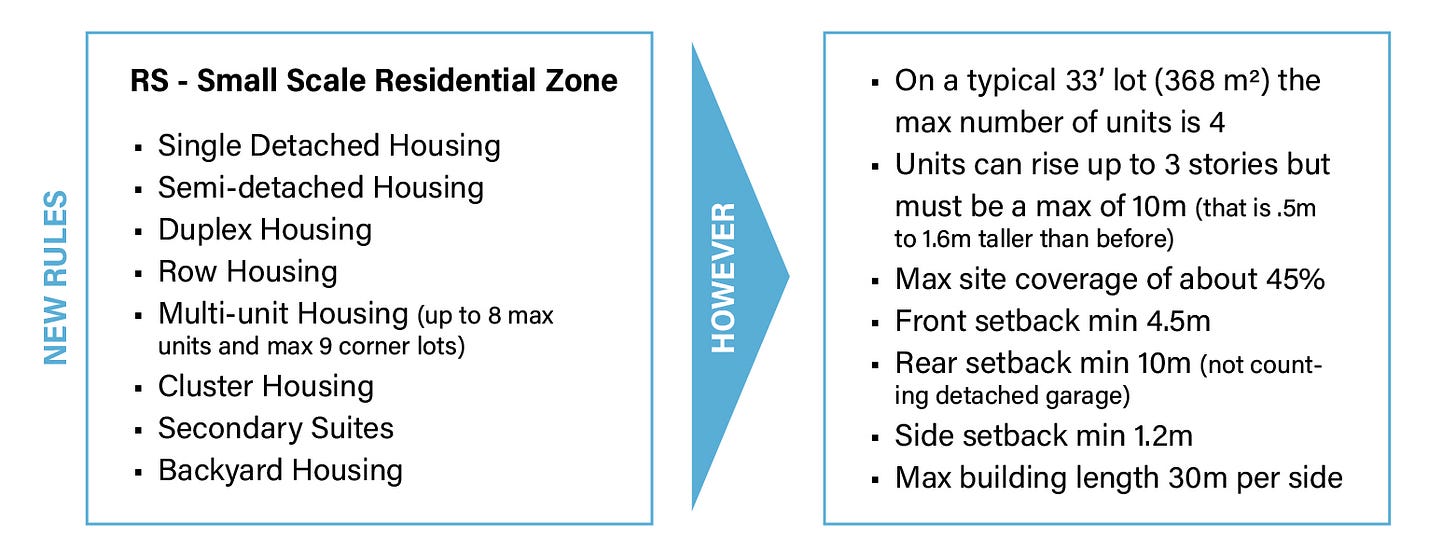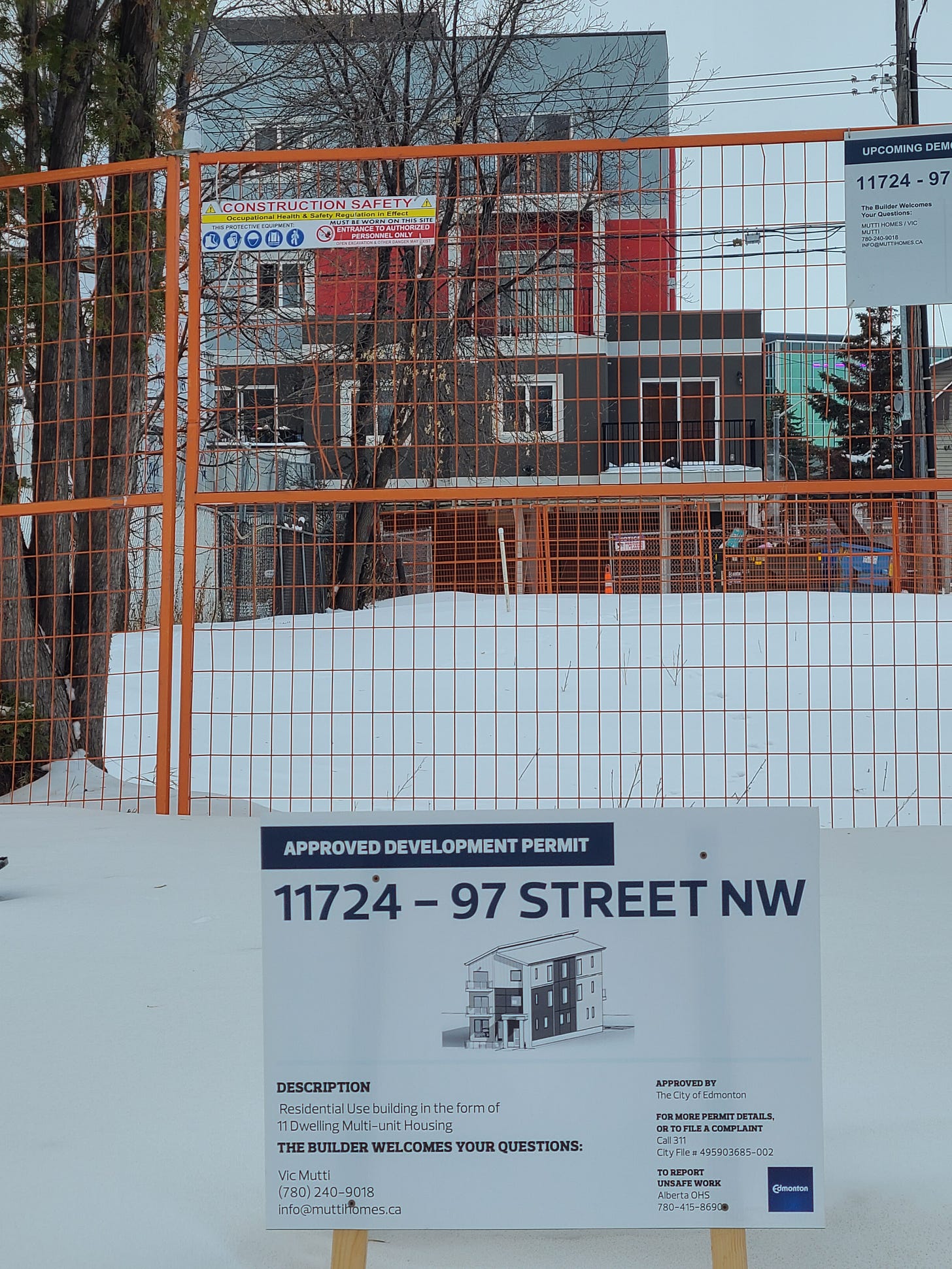City rezoning raises concerns
Community residents criticize bylaw changes in information session
An infill information session regarding the City of Edmonton’s new zoning bylaw 20001 and its impact on local residents was held in early February at the Alberta Avenue Community League. The event, hosted by community league civics director Alan Bolstad, drew a small but informed group of the north central community who tried their best to vocalize their concerns to the city.
The good:
Edmonton has experienced significant population growth, with more than 100,000 new residents making the city their home over the past two years. This growth coincides with many neighbourhoods reaching their maturity phase, creating an opportunity for revitalization that can accommodate the expanding population while attracting investors and residents who want to contribute to the area's development.
The greater Rat Creek Press area is particularly well-suited for development, with residential lots typically measuring 33 by 120 feet. These lots, which can be purchased for as little as $100,000 (lot only), have been rezoned under the revised "Small Scale Residential Zone" designation. This zoning classification creates excellent opportunities for thoughtful densification.
The development of multi-home units in these areas provides a crucial advantage by increasing housing affordability for new families entering the market. Adding to the positive momentum, recent changes to business parking regulations have removed historical barriers that previously made new construction challenging, opening up more possibilities for development.
Primary and Secondary Corridors have been rezoned under the new guidelines to include mid- and high-rise development (see illustration).
The bad:
Resident Donna Paliwoda is a supporter of increased density and infills, but was vocal about how the current plans are unrealistic.
“I did not know that they eliminated parking [bylaws] and I want to know if, in that decision, they considered the width of streets because ours are so tiny compared to newer developments,” Paliwoda noted. “It’s idiotic to think in these old neighbourhoods you’re going to have higher density —which we do welcome — but higher density without parking.”
It was made clear that the city's ambitious transit and accessibility goals rely on the assumption that 50 per cent of the population will depend on public transportation in the near future and have access to amenities within a 15-minute radius. Many residents believe that, while noble, this is currently more of a fantasy: Edmonton has a high car dependence rate, with one of the highest car-to-population ratios in Canada likely due to factors like weather, terrain, and suburban sprawl. Doubling or tripling the density on any residential street in the north central area will likely result in a free-for-all fight for parking spaces.
Residents are already dealing with some streets being too narrow even for fire trucks to access and have had poor experiences in the past getting the city to respond to issues (remember the ‘pit of doom’ saga?).
As for current transportation, Paliwoda weighed in saying, “I would love to have an efficient public transit system, I would probably not drive as much as I do. Sometimes you have three [bus route] number five’s in a row within two minutes. You need an efficient transit to go hand-in-hand with a denser population. I tried to live that 15-minute lifestyle for the last 20 years and, unfortunately, public transportation in the city has not kept up with the demand.”
There was a follow-up meeting where residents brought up more concerns:
Aging infrastructure could be tested to its limits with power and sewer systems possibly needing upgrades before the properties go in. Could this also increase taxes for people already living in the area?
Backyards may be obscured by three-story developments and, if they live near a main artery like 95 Street, six-story developments.
Large multiplex developments would cause increased foot traffic and less privacy for the existing neighbours.
The proximity of the two primary corridors (at 101 Street and 97 Street south of 118 Avenue), and 95 Street's secondary corridor which is zoned for developments that obscure the sky for anyone nearby. The burden of accessibility and parking poses even greater problems for the area.
Possible solutions:
Several attendees spoke of implementing mandatory on-premise parking requirements for each residential unit, either through underground parking facilities or dedicated rear parking spaces. It was also noted that this does not always solve the problem either, as infill garage space is notoriously small.
Another approach would be to establish strict regulations linking the number of permitted infill developments to available parking capacity in the area. However, this was not something the city seemed interested in dealing with.
Any solution involves improving the public transit system to make it a truly viable and attractive alternative to personal vehicles. This would require making it more efficient, with better routes and schedules that actually get people to their desired destinations on time, while keeping fares affordable.
Going forward:
Clearly this is an important issue that affects all residents in the RCP area. During the meeting, city officials seemed dismissive of their ability to address the issue and they would often point to their position just being one of “delivering a decision that has already been made.” The main concern is that math simply doesn’t add up if we are to increase density without guaranteeing the developer will consider parking in some form.
According to the city,the primary recourse for residents is to contact their councillor (currently Ashley Salvador). However, this suggestion was met with some skepticism, as meeting attendees reported difficulty in establishing communication with Councillor Salvador in the past. Maybe the community league could arrange a formal consultation with the councillor to figure out a plan of action — this is an election year for council, and they may be more responsive to constituents’ concerns knowing their jobs are at stake.
More information can be found at the following links:










Great article. I do find the opposition to the lack of parking requirements interesting. At least from my experience, neither I nor my neighbours ever parked in the parking area on our properties; we all parked on the street in front of our single-family homes. 🤷
AN excellent article. Very thorough and balanced. Thank you for posting.